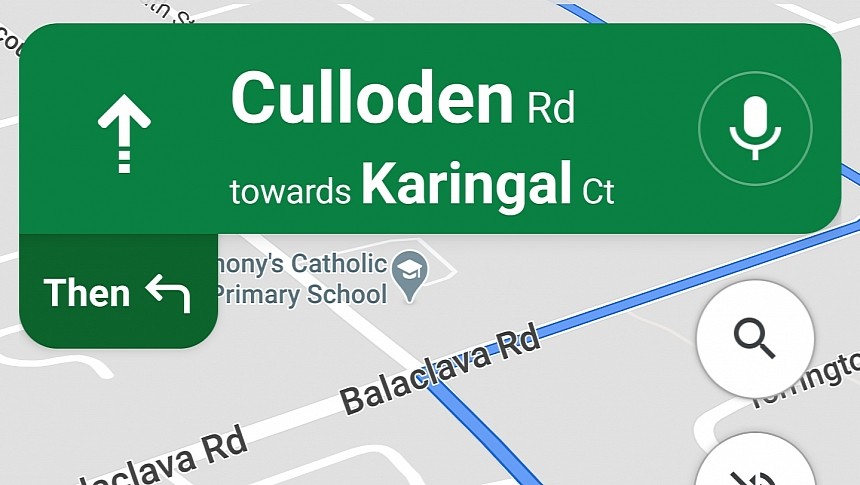Google Maps is getting a lot of love lately, and in addition to support for 3D buildings and saving the parking location on Android Auto, the app has quietly received what I believe is the biggest update in years.
Google Maps now supports Bluetooth beacons, allowing drivers to continue navigation in tunnels. Here's why this update is such a big deal.
Google Maps, Waze, Apple Maps, and other mobile navigation solutions rely on a GPS connection to determine your location and follow you on the map. The GPS connection must be stable to offer seamless navigation, so if you drive in regions where you lose the GPS signal, these applications might no longer locate you on the map.
The best example where maintaining a GPS connection is a challenge is a tunnel. Once you enter a tunnel, Google Maps loses the GPS signal, eventually interrupting the navigation experience, too. The application has no idea where you are, so it can't follow your location and offer turn-by-turn guidance.
Thanks to the beacon integration, Google Maps can receive location information and offer uninterrupted navigation. Your mobile device connects to beacons installed in tunnels using Bluetooth, allowing the application to retrieve your location and follow the vehicle as you drive before you exit the tunnel and reconnect to the satellites.
A recent discovery reveals that Google integrated Bluetooth beacon support in the Android version of Google Maps in late 2023. You can find the feature in the "Navigation settings" screen in Google Maps. It's called "Bluetooth tunnel beacons," and it's disabled by default. Once you enable the option, you must allow Google Maps to scan for Bluetooth devices.
Bluetooth beacon integration should not be mistaken for offline maps. Google Maps also offers offline map navigation, but the feature only works when the device doesn't have a data connection. It means you can continue navigation without a cellular signal, though it still requires a direct GPS connection to determine your location.
Google is no stranger to beacon support, as Waze, the other navigation app in its portfolio, already offers such capabilities. However, Google Maps apparently joined the party much later, though it remains one of the biggest updates in years.
Google aims to provide a seamless experience behind the wheel with Google Maps on the screen, especially as the application makes its way to more vehicles when fitted with Android Automotive. Google Maps on AAOS offers more advanced capabilities, including deeper vehicle integration to read the battery information and automatically suggest charging stops.
However, the beacon integration is exclusive to Android, with the feature currently unavailable on iOS. Google has remained tight-lipped on this update, but I expect the company to share more details in an upcoming blog post where it could also announce other Google Maps improvements.
Google Maps, Waze, Apple Maps, and other mobile navigation solutions rely on a GPS connection to determine your location and follow you on the map. The GPS connection must be stable to offer seamless navigation, so if you drive in regions where you lose the GPS signal, these applications might no longer locate you on the map.
The best example where maintaining a GPS connection is a challenge is a tunnel. Once you enter a tunnel, Google Maps loses the GPS signal, eventually interrupting the navigation experience, too. The application has no idea where you are, so it can't follow your location and offer turn-by-turn guidance.
Thanks to the beacon integration, Google Maps can receive location information and offer uninterrupted navigation. Your mobile device connects to beacons installed in tunnels using Bluetooth, allowing the application to retrieve your location and follow the vehicle as you drive before you exit the tunnel and reconnect to the satellites.
A recent discovery reveals that Google integrated Bluetooth beacon support in the Android version of Google Maps in late 2023. You can find the feature in the "Navigation settings" screen in Google Maps. It's called "Bluetooth tunnel beacons," and it's disabled by default. Once you enable the option, you must allow Google Maps to scan for Bluetooth devices.
Bluetooth beacon integration should not be mistaken for offline maps. Google Maps also offers offline map navigation, but the feature only works when the device doesn't have a data connection. It means you can continue navigation without a cellular signal, though it still requires a direct GPS connection to determine your location.
Google is no stranger to beacon support, as Waze, the other navigation app in its portfolio, already offers such capabilities. However, Google Maps apparently joined the party much later, though it remains one of the biggest updates in years.
Google aims to provide a seamless experience behind the wheel with Google Maps on the screen, especially as the application makes its way to more vehicles when fitted with Android Automotive. Google Maps on AAOS offers more advanced capabilities, including deeper vehicle integration to read the battery information and automatically suggest charging stops.
However, the beacon integration is exclusive to Android, with the feature currently unavailable on iOS. Google has remained tight-lipped on this update, but I expect the company to share more details in an upcoming blog post where it could also announce other Google Maps improvements.

